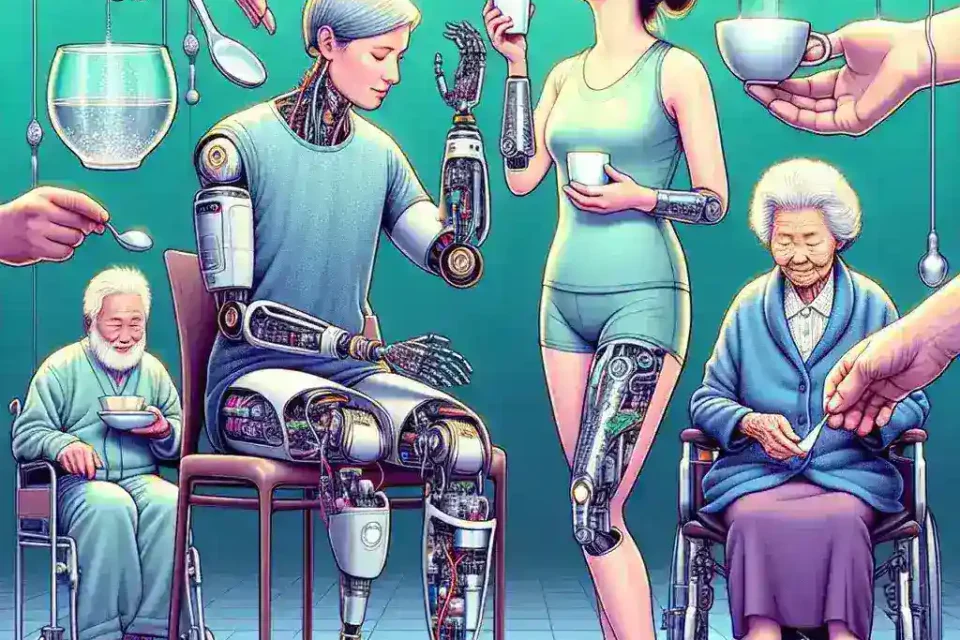AI Powered Robotic Prosthetics Achieving Near Natural Sensory Feedback

Introduction
The advent of artificial intelligence (AI) in healthcare has revolutionized many fields, particularly in the development of robotic prosthetics. Recent advancements have enabled these devices to achieve near natural sensory feedback, significantly improving the user experience for amputees. This article delves into the journey of AI-powered robotic prosthetics, their capabilities, the technology behind them, and the future they hold.
Historical Context
Prosthetics have been around for centuries, evolving from rudimentary wooden limbs to sophisticated devices equipped with electronic components. In the early 20th century, prosthetic limbs were primarily mechanical, offering limited functionality. However, with the introduction of electronics in the 1960s, the first electrically powered prosthetics emerged, paving the way for more advanced models.
Fast forward to the 21st century, the integration of AI has taken prosthetic technology to unprecedented heights. Researchers and engineers have been working diligently to improve the sensory feedback mechanisms of robotic prosthetics, allowing users to regain a sense of touch and proprioception.
What is AI-Powered Robotic Prosthetics?
AI-powered robotic prosthetics are advanced artificial limbs that utilize artificial intelligence algorithms to enhance their functionality. These devices can learn from user movements, adapt to various activities, and provide sensory feedback that mimics the natural feeling of a biological limb
Key Features of AI-Powered Prosthetics
- Adaptive Learning: Through machine learning, these prosthetics can adjust their responses based on the user’s movements and preferences, providing a customized experience.
- Sensory Feedback: Advanced sensors integrated into the prosthetics can simulate sensations of pressure, temperature, and texture, allowing users to feel their environment.
- Enhanced Control: Utilizing AI algorithms, users can control their prosthetics with ease, making movements more intuitive and natural.
How Near Natural Sensory Feedback is Achieved
The breakthrough in achieving near natural sensory feedback in robotic prosthetics lies in the collaboration of various technologies, including biomechanics, neuroscience, and artificial intelligence. Here’s a closer look at how this is achieved:
1. Biomechanical Sensors
These sensors are crucial for measuring physical parameters such as muscle activity and limb movement. By capturing real-time data, they help the prosthetic adapt its response according to the user’s actions.
2. Neurosensory Interfaces
Neurosensory interfaces connect the prosthetic device to the user’s nervous system. This technology allows the brain to receive signals from the prosthetic, facilitating sensory feedback mimicking natural limb functions.
3. Machine Learning Algorithms
Machine learning algorithms analyze data from sensors and user interactions to improve the performance and responsiveness of the prosthetic. Over time, the device learns the user’s preferences and adapts its functions accordingly.
Benefits of Near Natural Sensory Feedback
Providing amputees with near natural sensory feedback through AI-powered prosthetics comes with numerous benefits:
- Improved Quality of Life: Users can engage more meaningfully with their environment, improving their emotional and psychological well-being.
- Enhanced Functionality: The ability to feel sensations helps users perform everyday tasks more efficiently, from picking up delicate objects to navigating complex environments.
- Boosted Confidence: With improved control and feedback, users often feel more empowered in their daily lives, leading to greater independence.
Challenges in Development
Despite the significant advancements, several challenges remain in the development of AI-powered robotic prosthetics:
1. Cost
The high costs associated with these advanced prosthetics can limit accessibility for many amputees, creating disparities in healthcare.
2. Technical Complexities
Developing a seamless interface between the human nervous system and prosthetic technology poses significant technical challenges, requiring ongoing research and development.
3. User Adaptation
While these prosthetics offer advanced functionalities, users may require time and training to adapt to the new devices, emphasizing the necessity for proper support and education.
Future Predictions
Looking ahead, the future of AI-powered robotic prosthetics appears promising. As technology continues to advance, we can anticipate:
- Greater Integration: Enhanced integration of AI and sensory feedback mechanisms will lead to even more natural interactions between users and their prosthetics.
- Lower Costs: Ongoing research and competition in the market are likely to drive costs down, making these devices more accessible to a broader audience.
- Personalized Prosthetics: The future may see the development of prosthetics that are highly personalized, tailored to the unique needs and preferences of individual users.
Real Examples of Current Innovations
Several companies and research institutions are at the forefront of developing AI-powered robotic prosthetics:
1. Össur
Össur’s bionic prosthetics utilize AI to offer enhanced user experiences, including the ability to feel different textures.
2. DEKA Arm
The DEKA Arm system provides users with advanced functionalities, including the ability to perform complex tasks with precision.
3. BrainCo
BrainCo’s technology aims to create a seamless connection between the brain and prosthetic limbs, enabling users to control their devices through neural signals.
Cultural Relevance
The advancements in AI-powered robotic prosthetics not only influence technology but also carry significant cultural implications. As society becomes more inclusive and aware of the challenges faced by amputees, the importance of these innovations grows. Empowering individuals through advanced prosthetic technology fosters a broader conversation about disability, capability, and human potential.
Conclusion
AI-powered robotic prosthetics are revolutionizing the lives of amputees, allowing them to regain a sense of normalcy and improve their quality of life. With ongoing advancements in technology, the potential for these devices is limitless. As researchers continue to push the boundaries of what is possible, we can expect to see even more incredible innovations in the field of prosthetics, offering hope and independence to those who need it most.
